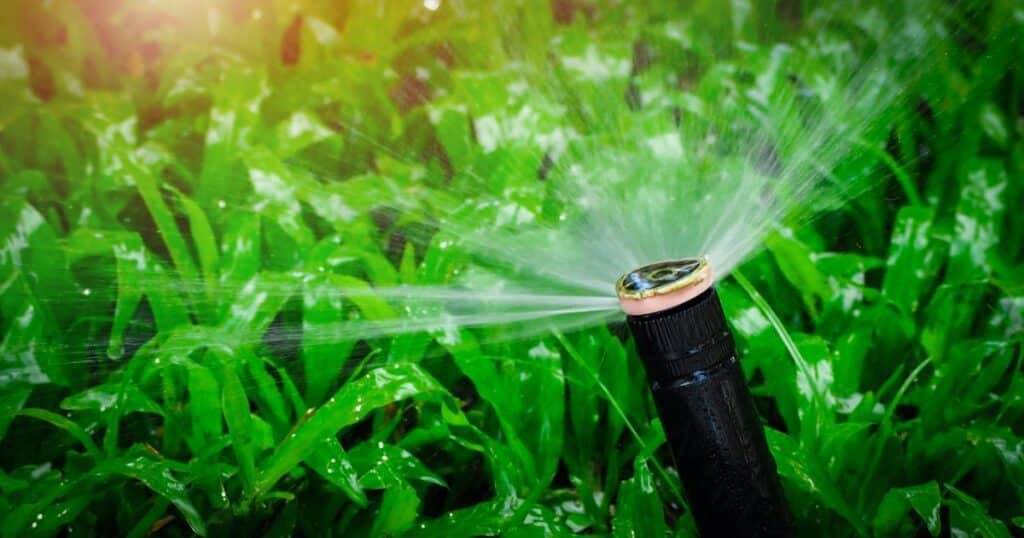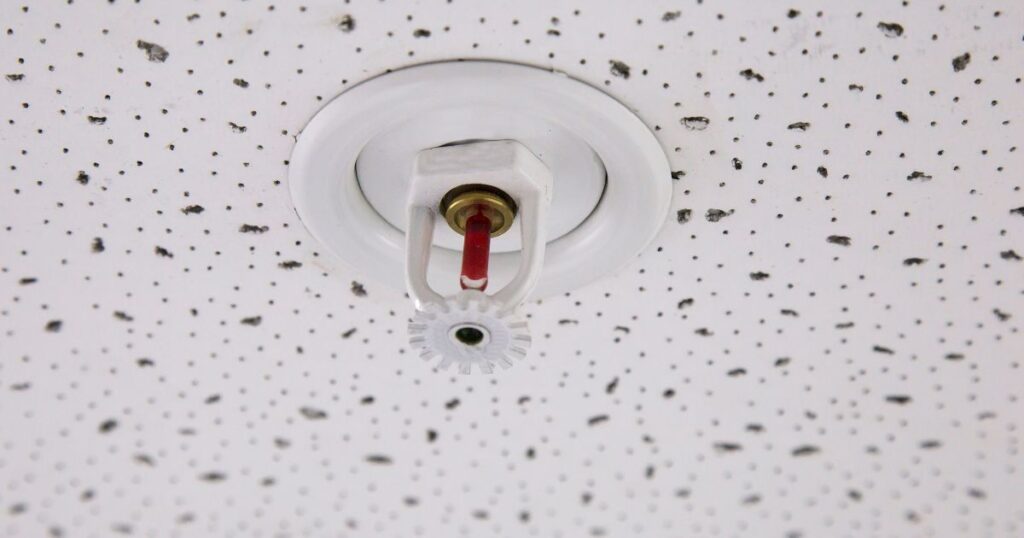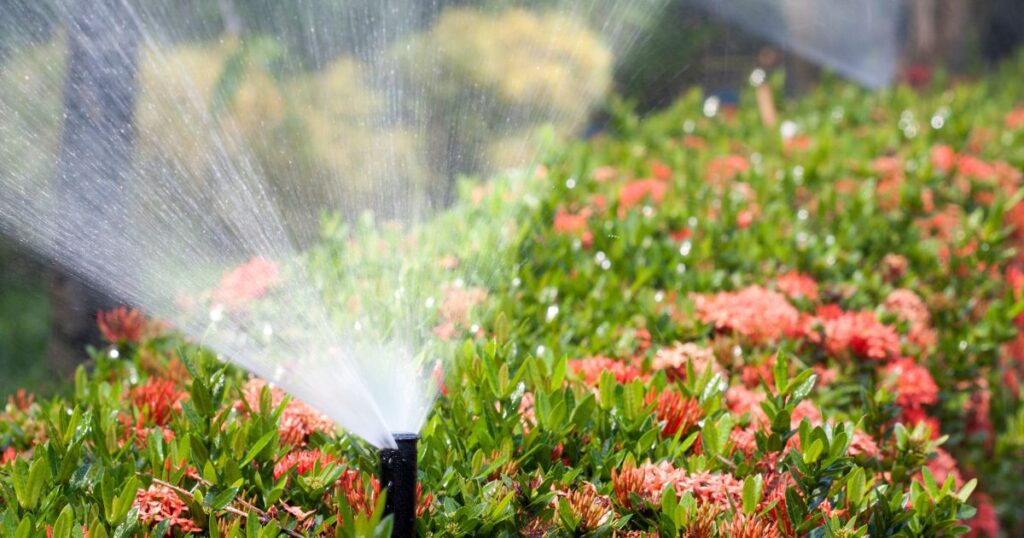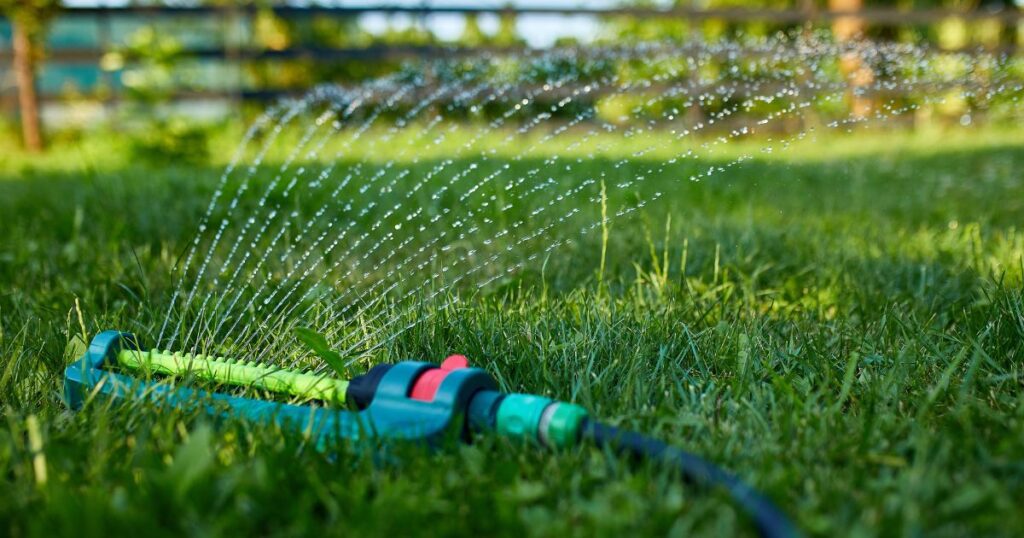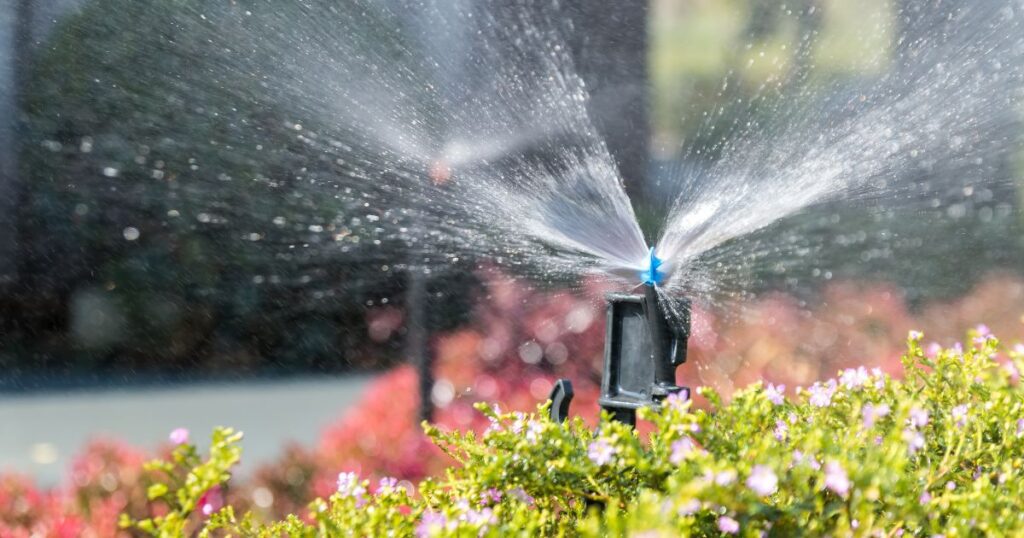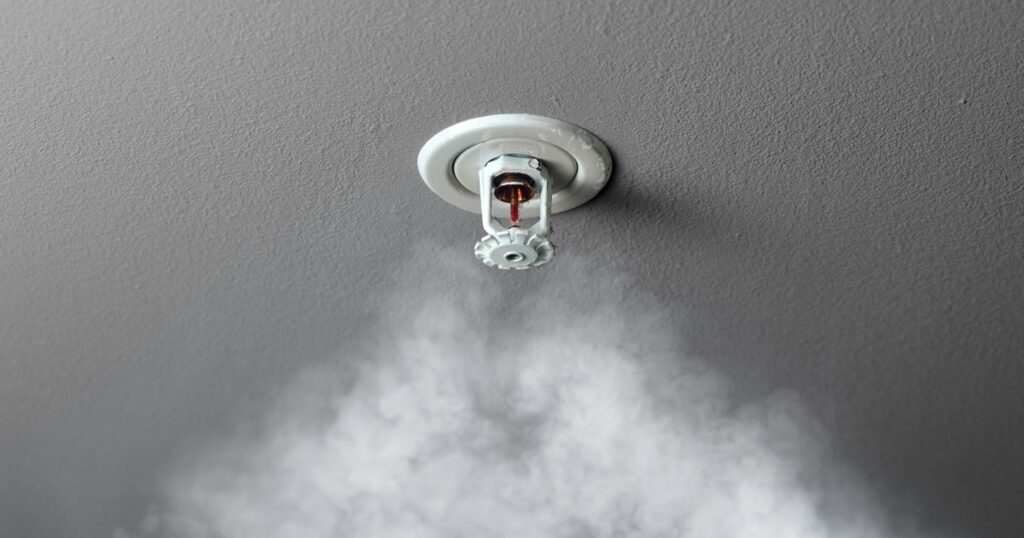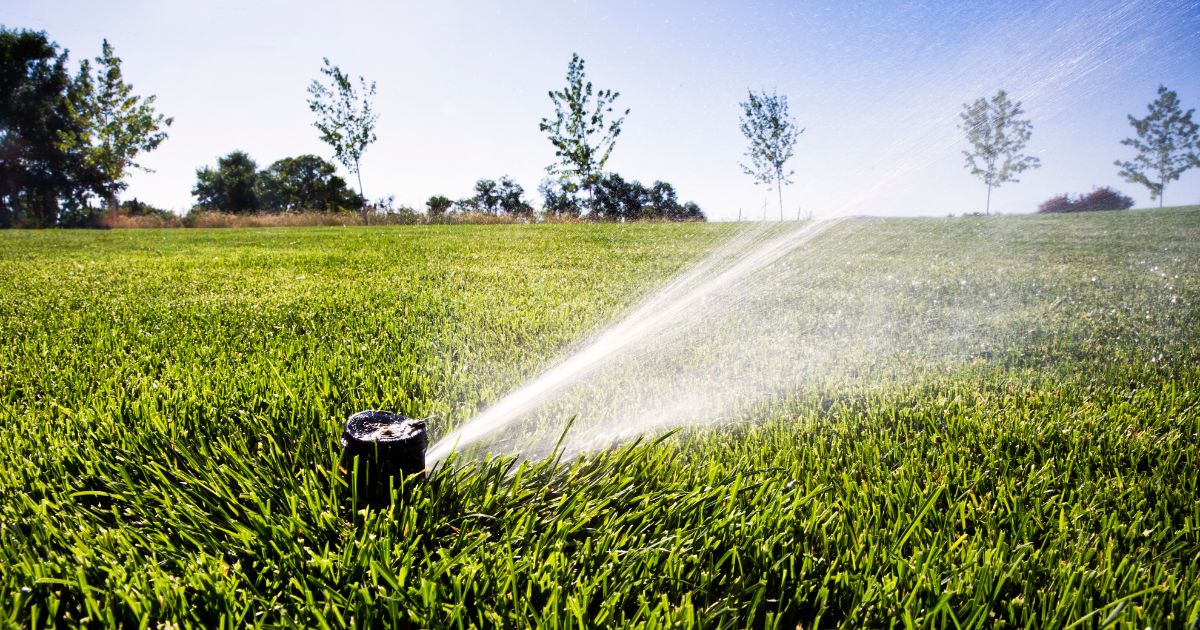
Are your sprinkler heads playing hide-and-seek underground? Curious about how to find buried sprinkler heads? Don’t worry, we’ve got the perfect guide to help you uncover their secret hiding spots! Finding buried sprinkler heads can be a challenge, but fear not, we have some clever tricks up our sleeves to make your search a breeze. So grab your detective hat and get ready to unearth those elusive sprinkler heads because we’re about to reveal the secrets to finding them without breaking a sweat. Get ready for a sprinkler scavenger hunt like no other!
To find buried sprinkler heads, start by visually inspecting your lawn for any signs of small circular or rectangular caps. Use a sprinkler head detection tool or a metal detector to scan the area and locate the underground heads. If all else fails, you can follow the water supply lines from the main valve to track down the hidden heads.
The Importance of Finding Buried Sprinkler Heads
If you have a sprinkler system, it’s important to keep it in good working condition. One of the most common problems with sprinkler systems is that the heads get buried over time.
When this happens, your lawn won’t be watered evenly, and you might end up with dry or dead spots. Finding buried sprinkler heads can also help save you money on your water bill.
If a sprinkler head is buried, it can’t do its job properly and will waste water. By finding and fixing these heads, you’ll ensure that your lawn gets the right amount of water without wasting any.
The Steps to be Taken
Before we dive into the details of how to find buried sprinkler heads, let’s take a brief look at the steps involved:
- Identify the general location of the sprinkler head.
- Dig around the suspected area.
- Use a probe rod to locate the exact location of the sprinkler head.
- Excavate and expose the buried sprinkler head.
- Test and repair or replace as necessary.
Each of these steps will be discussed in detail in this article. By following these steps carefully, you’ll be able to find any buried sprinkler heads in your lawn and get them back into working order. Now let’s move on to step one: identifying the general location of the sprinkler head.
The Importance of Identifying the General Location of the Sprinkler Head
Before digging and excavating to find a buried sprinkler head, it is essential to identify its general location. This step saves time, and effort, and prevents unnecessary damage to your lawn or garden. The general location of a sprinkler head depends on various factors such as soil type, water pressure, and the design of the sprinkler system.
Look for Signs of Grass Discoloration or Uneven Growth Patterns
One common sign that indicates the location of a buried sprinkler head is grass discoloration or uneven growth patterns. During watering cycles, sprinklers distribute water evenly over an area. If one area shows discoloration or has less growth than other areas around it, chances are that area is where a buried sprinkler head lies.
Once you locate an area with uneven grass growth or yellow patches in your lawn’s turfgrass, use a probe rod to poke around in that specific spot gently. A solid hit of something underground indicates you have found what you are looking for.
Use A Metal Detector To Locate The Valve Box Or Water Line Leading To The Sprinkler Head
A metal detector comes in handy if your lawn doesn’t show any signs of wear or if you cannot easily spot any unusual grass patterns. Turn on your metal detector and run it over the suspected valve box’s surface—the device should beep when detecting metal in the ground. Valve boxes are used to cover many irrigation components like valves, pipes, and wires and also help conceal them from plain sight from anyone who doesn’t know they’re there in cases when someone steps over them by accident.
By locating these valves using a metal detector, you can then gain better insight into where each specific pipe runs while avoiding damaging any pipes. If there are no valve boxes present above ground level, but an electrical outlet is nearby, it can also indicate that a valve or control box is buried out of sight within the ground.
Use your metal detector in this area to locate the sprinkler head’s water line leading back to the master control valve. Once you find the line, follow it to its point of origin, which should be where you find your hidden sprinkler head.
Digging Around the Suspected Area
The Importance of Careful Digging
Digging around a buried sprinkler head can be tricky, as you don’t want to accidentally damage any pipes or wires. It’s important to be careful, patient, and methodical in your approach.
Taking the time to dig carefully can save you a lot of headaches in the long run. If you rush through this step and cause damage to any irrigation components, it could end up being very costly and time-consuming to repair.
Tools You’ll Need
To dig around the suspected area of your buried sprinkler head, you’ll need some basic tools: a small garden trowel or hand shovel is perfect for the job. These tools will allow you to remove soil from around the suspected area with precision and without causing any damage.
Getting Started
Before starting to dig, make sure you have identified the general location of the sprinkler head (as outlined in Step 1). Once you have a good idea of where it is located, start digging around that area with your trowel or shovel. Begin with gentle probing motions around the edges of where you suspect it may be located.
Working Your Way Down
As you remove layers of soil from around your suspected spot, continue working your way down until you hit something solid. The sprinkler head may be deeper than expected, so do not stop digging until either it has been found or everything else has been eliminated as a possibility.
Mind Those Pipes and Wires!
As previously mentioned, one must tread carefully when digging near sprinkler systems as they are comprised of many different components such as PVC pipes and electrical wires, that all work together seamlessly when installed properly. Therefore, if one is not careful while digging up these components, it could be very costly and time-consuming to repair or replace them.
To avoid this, make sure to take your time and work patiently around the suspected area with gentle probing motions. If you encounter any pipes or wires, stop digging immediately and move on to another spot.
RELATED: How Long Should Sprinklers Run in Texas?
The Importance of Using a Probe Rod
When it comes to finding buried sprinkler heads, using a probe rod is an essential tool in the process. The probe rod is designed to help you locate the exact location of the buried sprinkler head without causing any damage to your lawn or landscape.
It’s important to use a thin probe rod so that you can insert it easily into the ground and maneuver it around obstacles such as rocks or roots. Using a probe rod can also save you time and money.
If you were to dig up your entire lawn looking for a buried sprinkler head, it could take hours of back-breaking work, and you could end up damaging other parts of your irrigation system in the process. By using a probe rod, you’ll be able to pinpoint the exact location of the sprinkler head quickly and easily.
How to Use a Probe Rod
To use a probe rod effectively, start by identifying the general location where you suspect the sprinkler head is located. Use a metal detector or look for signs of grass discoloration or uneven growth patterns to help narrow down this area.
Once you have identified the general area, insert your thin probe rod into the ground at various points around where you suspect the sprinkler head is located. Be sure to push down firmly on the rod so that it penetrates through any grass or roots that may be obstructing its path.
As you move your probe rod around, pay close attention to how easily it moves through different areas of soil. When you hit something solid, such as plastic or metal piping associated with your irrigation system, mark that spot with a small flag or marker.
Tips for Using Your Probe Rod Effectively
When using your probe rod, there are several things that can help make this process easier and more effective:
- Make sure your hands are clean and dry before handling the probe rod.
- Insert the rod at a slight angle to help it penetrate through any soil obstacles.
- Take your time and move slowly to ensure you don’t miss any buried sprinkler heads.
- If you’re having trouble finding the sprinkler head, consider enlisting the help of a friend or family member to assist you in the process.
Alternative Tools for Locating Sprinkler Heads
While using a probe rod is often the most effective way to locate buried sprinkler heads, there are other tools that can be used as well. For example, some irrigation professionals use ground-penetrating radar (GPR) technology to identify buried pipes and sprinkler heads.
However, GPR can be expensive and may not be necessary for most residential irrigation systems. In addition, using GPR requires specialized training and equipment, so it’s not something that homeowners should attempt on their own.
Overall, using a probe rod is an effective and affordable method for locating buried sprinkler heads. By following these tips and taking your time with the process, you’ll be able to quickly and easily find any hidden components of your irrigation system.
Excavate and Expose the Buried Sprinkler Head
Use a Shovel and/or Hand Trowel to Carefully Excavate Around Where You Marked with Flags
Now that you have located the buried sprinkler head, it’s time to expose it. Using a shovel and/or hand trowel, carefully dig around where you marked with flags. Keep in mind that the pipes leading up to the sprinkler head may be fragile, so take your time and be gentle while excavating.
It’s important to note that if you’re not comfortable digging around any underground piping or wires, it may be best to call a professional. Damaging any pipe or wire could lead to costly repairs in the future.
Once You Have Exposed Enough of It
As you dig around the sprinkler head, gradually expose more of it until you have enough room to work with. If necessary, use a small brush or broom to remove any dirt from around the area.
Be careful not to damage any part of the sprinkler head as you excavate. Keep an eye out for any cracks or other signs of damage that may need repair.
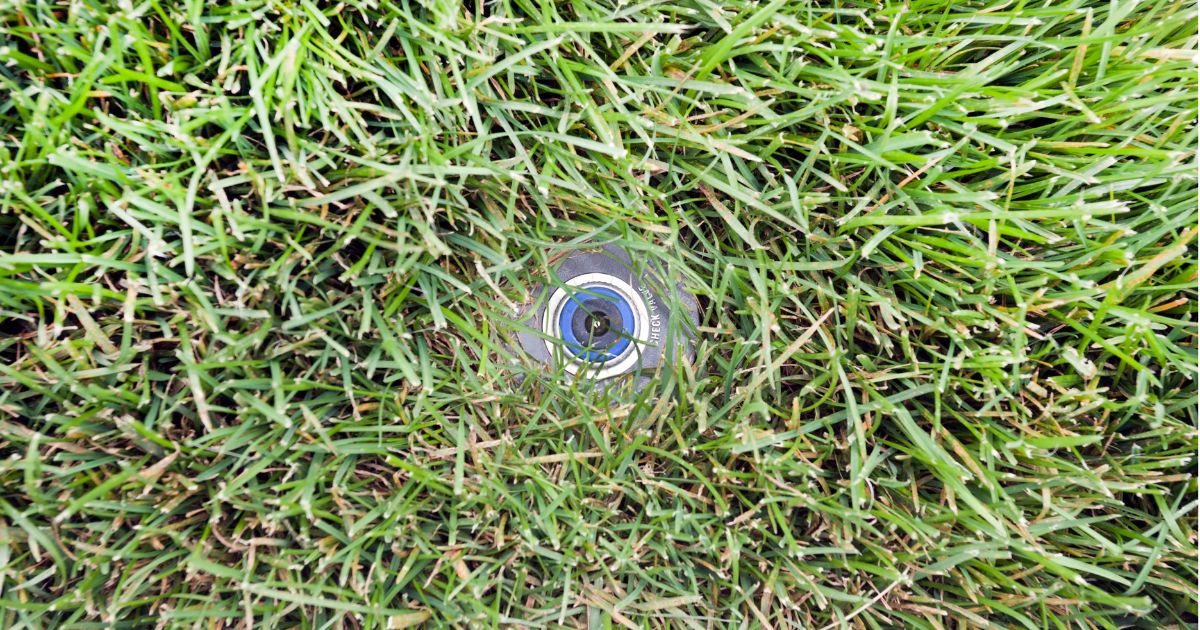
Tips for Excavating Near Other Utilities
If there are other utilities nearby, such as gas lines or electrical wires, be sure to take extra precautions when excavating. Use caution and follow the safety guidelines provided by your utility company.
Consider using hand tools instead of power tools when working near utilities. Also, try not to disturb soil within two feet of underground utilities, as this can cause problems later on.
Clean up After Yourself
Once you have exposed the buried sprinkler head and completed any necessary repairs or maintenance work, it’s important to clean up after yourself. Be sure all tools are put away, and the area is free of debris.
If you have any leftover soil, consider using it in other parts of your yard or garden. This will help reduce waste and improve soil quality in other areas.
RELATED: How To Install Sprinkler Riser Extension
Frequently Asked Questions
How do you find a sprinkler head without digging it?
There are sprinkler head locators available that use electronic signals to detect the presence of buried sprinkler heads, allowing you to locate them without the need for digging.
What is the best way to locate a buried sprinkler valve?
Using a valve locator device or a valve box key, you can systematically search for buried valve boxes and uncover the valves. This method helps locate the sprinkler valves without extensive digging.
What happens if a sprinkler head is buried?
If a sprinkler head is buried, it can lead to uneven watering and poor irrigation performance. It is essential to uncover and adjust the sprinkler head to the proper height to ensure efficient water distribution.
How do you trace an underground sprinkler pipe?
You can trace an underground sprinkler pipe by using specialized pipe locators that detect the electromagnetic signal emitted by the pipe. These devices can help you follow the path of the pipe and locate any buried sections.
How deep are sprinkler heads buried?
Sprinkler heads are typically buried at a depth of 6 to 8 inches below the ground surface. However, this depth can vary depending on local regulations and the type of sprinkler system.
How far to bury the sprinkler head?
Sprinkler heads should be buried at a height where the top of the head is level with or slightly above the ground surface. This ensures proper operation and prevents damage to the sprinkler head.
Conclusion
Finding a buried sprinkler head can be a daunting task, but with the right tools and techniques, it can be done. Remember to take your time, use caution when excavating near utilities, and clean up after yourself once you’re done.
By following these steps and tips, you can successfully locate and expose a buried sprinkler head without causing damage to your yard or any underground utilities. With proper maintenance, your sprinkler system will continue to provide crucial irrigation for years to come.

